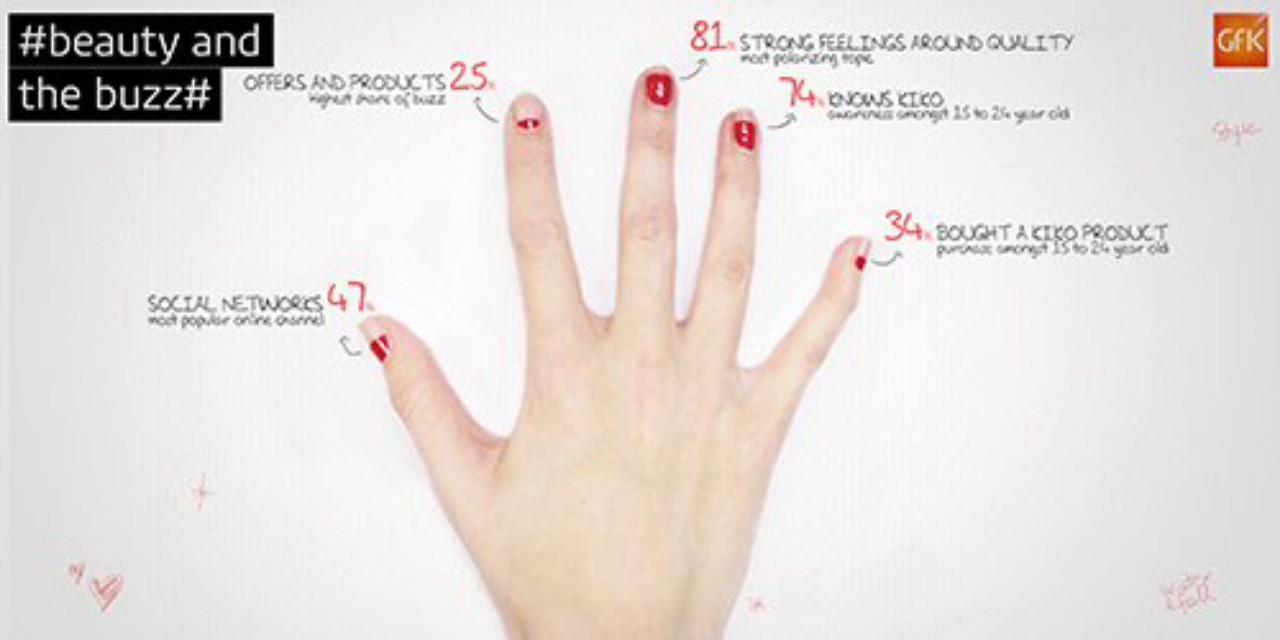The words beauty and buzz are almost synonymous in social media. If there’s one category where consumers have pushed the “social” in social media to the max, this is it. From blogs to forums to videos, beauty buyers want to share their advice, tips and expertise. In fact, a new definition has been added to the Urban Dictionary thanks to the beauty consumer: “haul”. Think of it as a “how to” tutorial provided by an amateur, where customers describe and comment on their latest purchases.
So what do they talk about? And, most importantly, how can brands benefit from listening to these conversations?
During the summer we used our Social Media Intelligence (SMI) approach to analyze French speaking conversations about beauty stores that had happened online. This wasn’t about monitoring current chats, but rather looking at the most visible beauty related content, regardless of when the comments were added. We captured 68,000 beauty store related posts and then carried out a deeper analysis on 2,600 we considered to be the most relevant. Each of these was subject to human coding and analysis to enable us to accurately capture the topics and sentiments – positive, neutral, negative – of those conversations. This approach is vital if we’re to faithfully reflect more complex meaning, such as irony, sarcasm or cultural references.

The key findings
- Offers and products have the highest share of buzz at 25%, although the sentiment of those conversations was quite neutral.
- Quality is a polarizing topic. 81% of the comments have strong feelings attached to this topic, with those who are not happy being especially vocal at 52%. However, quality related comments often refer to the services provided rather than the product. This could be the online purchase process or staff not being friendly.
- New brands can use social media to make a real splash and secure a lot of web “noise”, particularly with a younger audience.
Case study: how KIKO primed the French beauty stores market social media
Italian brand KIKO Make up MILANO, a new entrant to the French market, has succeeded in generating a lot of online “noise” using social media. GfK online research shows the brand is known by four in ten women (42%), rising to almost three quarters (74%) of 15 to 24 year old female consumers, KIKO’s core target audience. According to research we carried out in June, 46% of this age group had already bought KIKO’s products.
KIKO’s mostly younger customers value the wide choice of colors and attractive prices in their stores, particularly their great value nail varnish, a frequent topic of online conversations. Numerous user-generated discussions and videos (hauls) are available on Facebook, YouTube and blogs where young women share their latest KIKO treasures and tips. A qualitative analysis of comments like this around the KIKO brand enabled us to isolate the key success factors: the brand has been able to attract women who have swapped the personal, expert consultative sales approach of the more prestigious brands for the low price tag.
But more than this, KIKO has succeeded in creating a model where experience – particularly shopping experience – takes precedence over expertise. More demanding clients, looking for differentiation and exclusiveness, will choose other brands.
Key takeaways
- Address quality-related conversations as a priority. Customer complaints on social media are loud and emotional.
- Hauls are popular and powerful, especially on YouTube. Make sure your brand has a strategy to harness them.
- Getting your omnichannel strategy right is essential. Many comments reveal how closely linked the shopping experience is with the way consumers perceive products.
For more information, please contact Frédérique Bonhomme at frederique.bonhomme@gfk.com.




